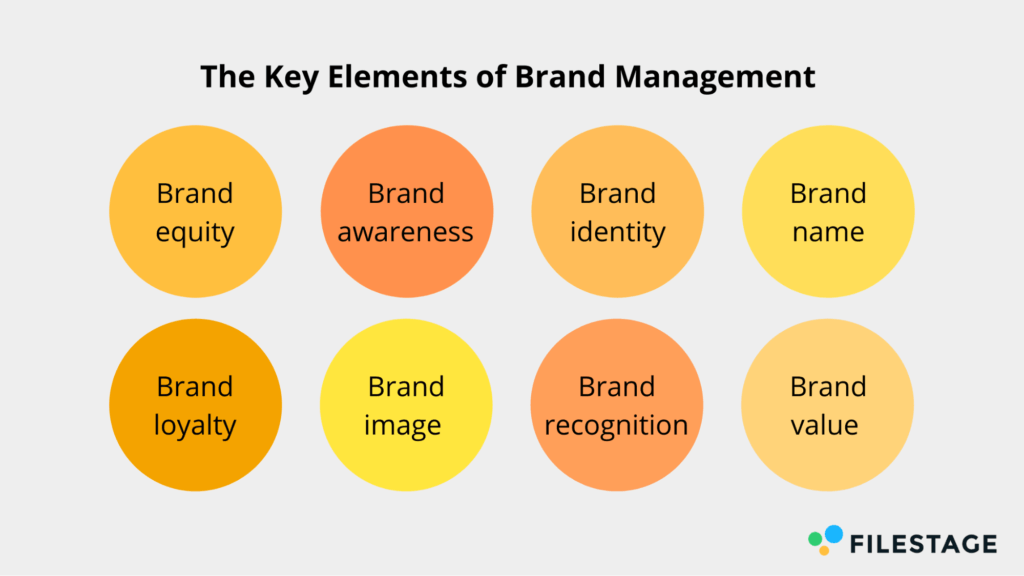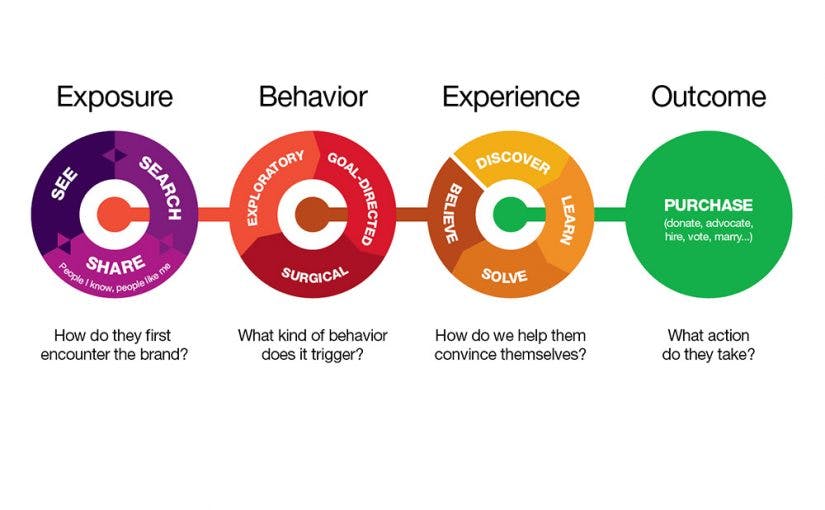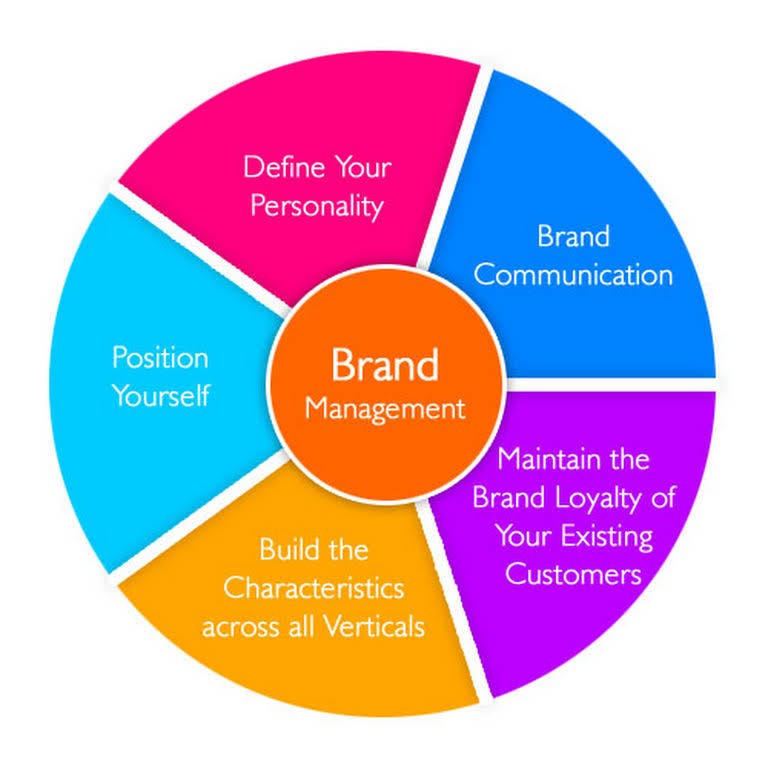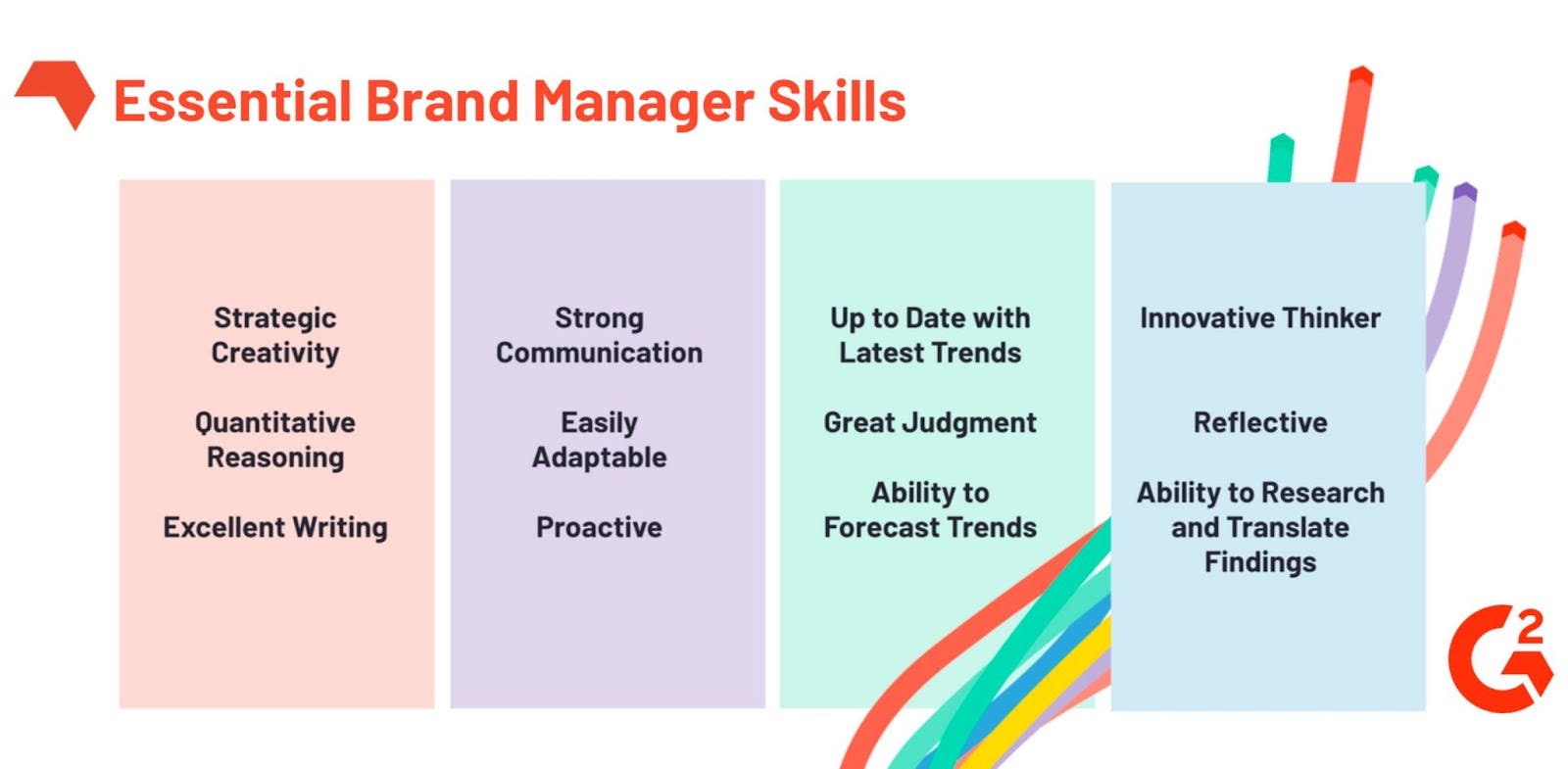Complete guide to brand management
Apr 18th, 2022

Contents
What is brand management?
Brand management components
Brand management best practices
The role of brand manager
Conclusion
The brand is more than the products your company is selling. It covers your interactions with customers, corporate culture, and relationships with stakeholders and employees. Brand relates to your mission, values, and the company’s image in the mind of the consumer. To easily monitor the perception of the brand, companies use brand management.
Brand management is vital for maintaining an impeccable reputation and making sure that people see the brand in the way you want. It establishes the longevity and resilience of your company. Without brand management, it is impossible to produce a successful brand that survives on the market.
What is brand management?
Brand management is the process of developing a positive brand experience and ensuring that the brand is accurately presented to the target customers. Brand management uses a wide range of techniques, such as PR, advertising, strategic analysis, and market research to improve the brand’s perception over time. Effective brand management strategy contributes to building brand awareness, growing a loyal customer base, and as a result, generating higher revenue and strengthening brand equity.
The terms “branding” and “brand management” are often confused. Branding refers to the process of creating the brand, whereas brand management enables companies to grow and maintain a good reputation. Brand management covers the set of measures needed to keep a consistent brand identity. It facilitates that all branding elements, including the style, messaging, and events, align with the image the company wants to present.
Brand management deals with tangible and intangible features of the brand. Tangible characteristics include product packaging and price, whereas intangible features are an emotional connection with the audience and customer experience. In addition, brand management requires not only maintenance of the reputation but also consideration of the products for sale under the company’s brand or consulting with the analysts to determine businesses to buy or merge with.
Brand management components
If the company strives to develop an outstanding personality in the business world, it needs the right strategy. The brand management process provides for developing the plan that sustains and promotes brand recognition, indicates the brand’s uniqueness to customers, and reinforces brand associations. The strategy usually consists of four main steps:
- identifying and establishing brand positioning and values,
- executing marketing campaigns,
- measuring and analyzing performance,
- maintaining and growing brand equity.
We broke each step into several components that we will consider in more detail below.
Brand vision and purpose
The first step of the brand management process is for setting your goals. Vision and purpose are the fundamental elements of any brand needed for planning the future. The vision determines what your brand aspires to and how the customers will perceive it in the coming years. Brand purpose is the company’s reason for existence other than to make money.
The brand vision is a short statement that contains a core ideology and a projected future. When creating a brand vision, you should focus on the people you are helping and your company’s contribution to the community. Moreover, you should take into account not only your customers but your employees as well. Assure that employees understand the company’s values and appreciate them.
Brand purpose is the foundation for your future business decisions. If you answer the question “why” and define the purpose, you will be able to provide the answers to the questions “how” and “what” related to corporate culture and products. Furthermore, the customers expect companies to be transparent. People want to make sure they spend money not just on products or services. They want to subscribe to a higher goal, which drives the business they buy from, such as promoting environmental protection or cultural diversity.

Brand positioning
The following step implies defining the unique place on the market. The main aim of the positioning is to build associations in the mind of target consumers to influence their perception of the brand. Superb brand positioning is the degree to which a brand is viewed as appealing and trustworthy. It leads to customer trust, brand equity, and desire to purchase the products or services.
Effective brand positioning also allows the company to stand out from the competition. It helps raise brand awareness, catch consumer attention and justify pricing strategy. Positioning makes the brand unique, differentiates its products from similar offers, and communicates the advantages to the consumers.
There are several strategies you can apply when establishing your brand positioning. For example, you can emphasize the positive features of your brand, compare it with the other brands in your target market, focus on the customers’ needs or niche audiences, or create associations with cultural symbols. The basic steps require determining the target market, defining main brand characteristics, analyzing the existing competitors, and defining the perceptual map.
Brand design and planning
At the brand design stage, you will deal with developing the key components of brand identity, such as naming, slogan, logo design, online presence, and the plan for taking the brand to the market. These basics are essential for the successful launch of any business, so they should not be overlooked. While working on the visual part, brand designers should identify the personality the company wishes to portray. So, they should pay close attention to the company’s vision, mission, and purpose.
Naming is one of the most crucial steps of brand design. It should convey meaning, tell a story, and provide some information your customers can identify with. Name is the first touch your customers have with your brand, so it is important to make a good impression. The following critical element is the logo. It would represent your brand on social media platforms, advertising, merch, and labels. You need to design a logo prior to developing the visual elements, including the fonts, style, and color, as they will define your brand appearance in the next projects.
Then it is time to design the other visual elements, such as packaging, labels, typography, and mascots. If you strive to make your brand experience more personalized, mascots will be useful. These are specifically designed characters intended to humanize the brand. Mascots can either exist as a separate element or be a part of the logo. The characters establish communication with the customers, deliver your brand message and increase recognition and memorability.
Finally, you need to draw up a plan for taking the brand to the market. The points for consideration are your value proposition, messaging, and customer journey. Think of the resources, tools, and support materials you might need for an effective sales process. Create user personas and use cases. We dive into the detail of the brand design process in our article on digital branding.
Brand experience
Branding is more than customer experience. It covers every component related to the way customers experience your brand. Brand experience is an umbrella term that includes brand strategy, user experience, and customer experience. It concern’s customers’ emotional, physical and sensory perception before, during, and after interaction with any aspect of the brand.
A positive brand experience is a brilliant way to connect with the consumers, build a higher level of engagement, and motivate customers to take action. Great brand experience significantly raises the chances of your product being chosen over competitors’ offers.
There are many tactics to create an excellent brand experience. Share your brand story through social media and blogs to inspire consumers and encourage interest. Maintain consistency across different elements, including visual components, communication, and attitude. Encourage people to interact with your brand through surveys and contests. Analyze customers’ feedback on social media to gain insights and adapt to changing consumer needs.
Brand engagement
Brand engagement signifies building a strong emotional connection between the customer and the brand. There are two types of brand engagement: internal and external. Internal engagement refers to the relationship between the brand and its stakeholders or employees. External engagement is the interaction between the brand and the target audience. Both types of engagement are vital for the overall success of the brand management process.
Positive external brand engagement favorably impacts good customer relationships and customer willingness to buy the products. Some common touchpoints or places where people interact with your brand are the official websites, social media platforms, physical stores, and online reviews. The most effective techniques to build customer engagement include conducting giveaways and polls, organizing online and offline events, motivating customers to share user-generated content, providing vouchers and discounts, and asking people for feedback.
Internal engagement is inextricably linked to corporate culture and your company’s mission and values. Well-developed internal engagement leads to increased employee performance, reduced turnover, growth of a community, and a strong focus on future goals. The methods for developing employee engagement are holding company events, team-building activities, employee wellness programs, rewards, and satisfaction surveys.

Brand measurement
Measurement is the last step required for the successful implementation of the brand management process. It will provide a better understanding of how your brand is performing for the target audience and against the competitors. In addition, brand measurement helps analyze the success of the existing marketing mix and strategize for the future. This approach is suitable both for new and existing brands to improve their overall brand measurement.
There are several brand metrics applicable in this respect. They include perceptual, behavioral, purchase, and financial indicators. In other words, you can analyze what people think about your brand, how the customers engage with it, how your target market buys and uses your product, and generated revenue.
You can measure brand awareness through surveys and focus groups, mentions in local media and reviews, store traffic, and the number of searches for your brand. To explore customer preference, use sales data and questionnaires. Include questions concerning brand relevance, accessibility, and emotional connection. The net promoter score will help you estimate brand loyalty by asking a question: “On a scale of 0-10, how likely are you to recommend [brand] to your family and friends?”
The question “Have you purchased [product] from [our brand] before?” will be helpful in determining previous and existing clients. Ask people to choose the brands they regularly use from the list containing the competing brands. In addition, you can analyze website data, such as conversion rate, traffic sources, and social media statistics, including shares, engagement, and referrals.
Brand management best practices
Further, we will list the best brand management tactics to enhance the positive image of your brand and make your business stand out.

Pay attention to content marketing. Content marketing is one of the most crucial elements that influence your brand's reputation. It focuses on producing educational content, such as blog posts, ebooks, and social media articles. In contrast to sales materials, content marketing provides information for free and helps customers solve their problems. This approach inspires trust and improves brand perception.
Deliver first-class customer experience. Your primary goal is customer satisfaction. Happy customers leave positive reviews and share their experiences with friends and relatives. Stay in contact with the consumers through newsletters, send updates and encourage people to share their opinion, success stories, and testimonials. Provide customer support via multiple channels.
Leverage social listening tools. Negative comments can severely affect your reputation, so you should be able to react in a matter of seconds. Social listening tools are useful for monitoring negative comments and mentions. For example, many CRM systems have a built-in function that sends notifications when a customer writes something positive or negative about your brand.
Apply a personalized approach. Personalization is a key to maintaining a good reputation. Before reaching out to the customers, conduct qualitative research on their needs, interests, and recent purchases. CRM allows for viewing order history, previous support tickets, and other essential data. Use this information to improve the work of the sales department and provide personalized communication.
Improve employee engagement. It is vital to remember that employee satisfaction is just as important for successful brand management as customer experience. Satisfied employees will deliver better customer support, work harder, and as a result, influence brand reputation. Collect employee feedback to improve the workflow, create the bonus system and offer growth opportunities.
In the next section, we will discuss the role of the brand manager and his key responsibilities in developing and maintaining a positive reputation.
The role of brand manager
The brand manager is that specific person within the company responsible for the success of all of the aspects we’ve discussed above. Effectively, the role of a brand manager is to ensure that the company’s products and services meet the needs of the new and existing customers. These experts monitor market changes, analyze the competitors’ offers and adjust the company’s strategy to market requirements. Let us cover the key responsibilities in detail.

Carrying out market research. Brand managers conduct market research to be aware of customer trends. Market research provides the company with vital information on the chances of its product or service becoming successful. With this data, the specialists can set the best price and determine the target audience that is likely to purchase the product. As a result, market research leads to increased SaaS sales and better customer management, resulting in overall business growth.
Developing marketing strategies and managing campaigns. Brand managers usually participate in developing long-term and short-term marketing strategies. For example, when developing a content marketing strategy, brand managers may support contents strategists and editors in building the best long-term vision. The specialists also analyze the performance of marketing campaigns and create reports. The other responsibility of the brand manager is to organize events, including exhibitions and product launches. The brand managers might be responsible for the portfolio of products to increase the customer base and enhance brand recognition.
Maintaining branding consistency. The professionals review the advertising, product design, and marketing content to make sure that everything matches the brand voice and positioning. The brand managers have to ensure that visual identity, brand messaging, and the company’s core values align with the overall strategy and correlate with the consumers’ needs. The specialists conduct customer perception research and apply brand identity guidelines to keep the brand consistent across various channels.
Collaborating with sales and support departments to provide product marketing materials. Brand managers lead and coordinate operations, finance, sales, and product development teams to successfully execute marketing efforts. The specialists conduct meetings with clients and work with marketing managers, marketing assistants, and chief executives. They also collaborate with advertising companies to ensure that the brand’s mission and guidelines are followed in all communications.
The specialists are also responsible for managing marketing budgets through tracking and forecasting. They manage the budgets for advertising and promotional activities, content creation, and software needed for marketing campaigns. Brand managers analyze sales predictions and report on product sales.

The role of a brand manager is pivotal for the company as it is critical to make sure that the market perceives your brand in the right way. The brand manager analyzes the customer feedback and ROI from the marketing campaigns and learns what worked well for certain products. Thus, the specialist manages all creative activities, helps support the company’s strategy, and assists in developing future projects.
Conclusion
Brand management plays a critical role in developing and maintaining a good reputation and the brand’s overall success. It covers various areas to estimate online and offline brand presence and provides consistent brand identity to the customers. While each brand management approach differs depending on the company, its task is to build a unique and memorable brand or rebrand the products, should this promise new opportunities.
